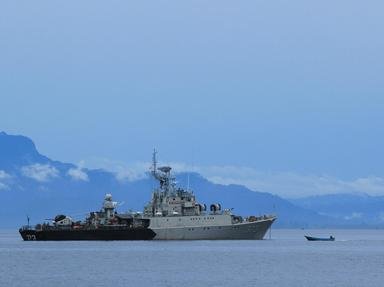Quiz Answer Key and Fun Facts
1. The Battle of Quiberon Bay, 1759
2. The Glorious First of June, 1794
3. The Battle of Cape St. Vincent, 1797
4. The Battle of Camperdown, 1797
5. The Battle of Copenhagen, 1801
6. The Battle of Navarino Bay, 1827
7. The Battle of the Falklands, 1914
8. The Battle of the River Plate, 1939
9. The Battle of Cape Matapan, 1941
10. The Sinking of the Bismark, 1941
Source: Author
Southendboy
This quiz was reviewed by FunTrivia editor
ponycargirl before going online.
Any errors found in FunTrivia content are routinely corrected through our feedback system.
